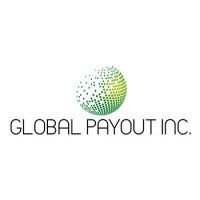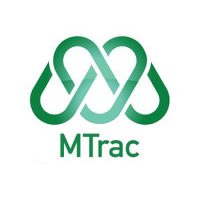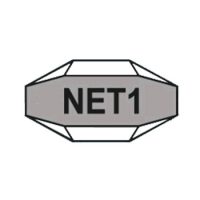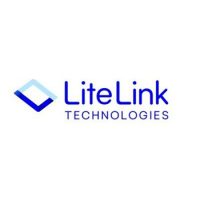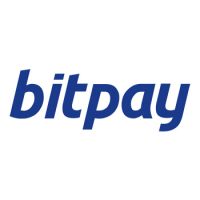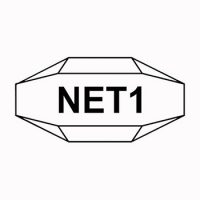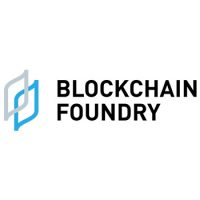Blockchain
World Quantum Computers and Blockchain Mechanism Analysis Report 2022: Discussions of Quantum-Enabled Blockchain Architectures Based on Quantum Random Number Generators and Quantum Key Distribution

The “The Quantum Threat to Blockchain: Emerging Business Opportunities” report has been added to ResearchAndMarkets.com’s offering.
This report identifies the challenges and opportunities that arise from the threat that quantum computers pose to the “blockchain” mechanism that makes cryptocurrencies viable as a form of money as well as playing an important role in future “smart contracts,” novel supply chain strategies and other innovative deployments of IT.
That quantum is a major threat going forward is beyond doubt. According to a recent study by the consulting firm Deloitte, approximately one-fourth of the Bitcoin in circulation in 2022 is vulnerable to quantum attack. The White House National Security Memorandum/NSM-10, released on May 04, 2022, indicated the urgency of addressing imminent quantum computing threats and the significant risks to the economic and national security of the United States.
Although the main focus of this report is on the quantum threat to the integrity of cybercurrencies, the applicability of blockchain (and therefore the threat of quantum) is much broader than the newer types of money. Blockchain technology has been proposed for a wide range of transactions, including insurance, real estate, voting, supply chain tracking, gambling, etc.
A quantum computer-compromised blockchain would allow eavesdropping, unauthorized client authentication, signed malware, cloak-in encrypted session, a man-in-the-middle attack (MITM), forged documents, and emails. These attacks can lead to mission-critical operations disruption, reputation, and trust damage, as well as loss of intellectual property, financial assets, and regulated data. Note that this report covers both technical and policy issues relating to the quantum vulnerability of blockchain.
As things stand now, blockchains are secured with relatively garden-variety encryption schemes. However, quantum computers will have the computational power to break these schemes as they grow in power. Predictions of when quantum computers will attain such power vary from five years to never, but, the threat hangs over the cryptocurrency industry as a whole and is a dampener to its prospects.
Quantum computers directly threaten classical public-key/private key cryptography blockchain technologies because they can break the computational security assumptions of elliptic curve cryptography. They also significantly weaken the security of critical private key or hash function algorithms, which protect the blockchain’s secrets.
Also, some of the early expenditures on quantum-safe technology in the cybercurrency market will undoubtedly go to protecting data from attacks later, when quantum computing resources become mature. This issue becomes more important as we grow closer to the day when powerful quantum computers become a reality. But preemptive action on the quantum threat means that the business opportunities in this space are emerging right now.
As this report makes clear, the publisher sees major commercial opportunities to protect blockchain and the technologies dependent on blockchain against future quantum computer intrusions. One area that this report focuses on especially is post-quantum encryption (PQC), in which relatively traditional encryption schemes are devised that are simply much harder to break than currently used encryption schemes.
With NIST announcing a new set of PQC standards in July 2022, the publisher believes that PQC firms will be receiving major investments in the near term as a result of the growing concerns about bad actors with access to quantum computing resources.
The publisher believes there is also a need for relatively low-cost information-theoretically secure (ITS) solutions that instantly strengthen standardized cryptography systems used in blockchains. Thus, this report also discusses quantum-enabled blockchain architectures based on Quantum Random Number Generators (QRNG) and Quantum Key Distribution (QKD).
Key Highlights:
- With NIST announcing a new set of PQC standards in July 2022, PQC firms will soon be receiving major investments in the near term much of which will apply to blockchain. However, not all NIST-based PQC solutions will be feasible for blockchain use. Given the nature and intricacy of PQC, it will take years of planning for a successful migration to PQC-backed Blockchain protection.
- The earliest of expenditures on quantum safe technology in the block chain market will go to protecting data from attacks later, when quantum computing resources become mature. This issue becomes more important as we grow closer to the day when powerful quantum computers become a reality. But data theft today requires preemptive action. The quantum threat to the blockchain means that business opportunities in this space are emerging right now.
- There is a need for low-cost information-theoretically secure (ITS) solutions that instantly strengthen standardized cryptography systems used in blockchains. Already much discussed in this context are quantum-enabled blockchain architectures based on Quantum Random Number Generators (QRNG) and Quantum Key Distribution (QKD). Another important concept is quantum-enabled blockchain, which refers to an entire blockchain or some aspects of the blockchain functionality being run in quantum computing environments.
- Mining is another aspect of blockchains vulnerable to quantum attacks. Mining is the consensus process that certifies new transactions and keeps blockchain activities protected. One risk with mining is that miners using quantum computers could launch a 51% attack. A 51% attack is when a single entity controls more than half of the computational power of the blockchain. A quantum attack on mining would undermine the network’s hashing power.
Key Topics Covered:
Chapter One: Introduction
1.1 Objective and Scope of this Report
1.1.1 The Threat of Quantum Computers to Blockchain
1.2 Cryptography Background to this Report
1.2.1 Concerned Organizations
1.2.2 NIST PQC Efforts and Beyond
1.2.3 Addressable Market for Quantum-safe Cybercurrency
1.3 The Goals of this Report
Chapter Two: Classical Blockchain Cryptography and Quantum Computing Attacks
2.1 Overview of the Quantum Threat
2.2 NIST and Post-quantum Cryptography
2.2.1 Structure of the NIST PQC Effort
2.2.2 Importance of Asymmetric Digital Signatures
2.2.3 Impact of Doubling Key Size
2.2.4 Algorithm Security Strength
2.3 Advanced Encryption Standard (AES)
2.4 Quantum Attack Resources Estimates to Break ECC and DSA
2.5 Quantum Resistant Cryptography for Blockchains
2.5.1 Taproot and Bitcoin Core
2.5.2 Impact of NIST-based PQC Algorithms
2.6 Post-quantum Random Oracle Model
2.6.1 Modeling Random Oracles for Quantum Attackers
2.7 Summary of this Chapter
Chapter Three: Quantum Opportunities of the Blockchain Kind
3.1 Blockchain Basics
3.1.1 What are Classical Blockchains?
3.2 Quantum-Enabled Blockchain
3.2.1 Role of Quantum-safe Security Technologies
3.3 Blockchain Security
3.3.1 Role of Conventional Cryptography
3.3.2 Attacks on Classical Cryptography
3.3.2.1 Some Known Attacks Against ECDSA
3.3.2.2 ECDSA Key Pair Generation:
3.3.2.3 Signature Computation:
3.3.2.4 Recommendations:
3.3.2.5 Blockchain Security Summary:
3.4 Mitigating Cyberattacks on Blockchains
3.5 Blockchain Security: Entropy/Randomness
3.5.1 Examples of Low Entropy Attacks
3.6 Random Number Generator Product Evolution
3.6.1 PRNGs
3.6.2 TRNGs
3.6.3 QRNGs
3.6.4 OpenSSL 3.0
3.7 Summary of this Chapter
Chapter Four: Quantum Impacts on the Cryptocurrency Business
4.1 Qubit and Quantum Gates
4.1.1 Qubits
4.1.2 Quantum Gates
4.1.3 Quantum Fourier Transform
4.1.4 Oracle
4.1.5 Amplitude Amplification
4.2 Quantum Algorithms
4.2.1 Shor’s Algorithm
4.3 Specific Quantum Threat to Blockchains
4.3.1 Risk of Quantum Attack in Authentication
4.3.2 Grover’s Algorithm and Hashing
4.4 Risk of Quantum Attack in Mining
4.5 Nonce Attacks
4.6 Blockchain Data Structures
4.7 Summary of this Chapter
Chapter Five: Quantum Hash and QKD
5.1 Classical to Quantum Hashing Functions
5.1.1 Summary: Quantum Hashing Functions
5.2 Quantum Key Distribution (QKD)
5.2.1 Technical Issues
5.2.2 Issues Needing Work in Blockchain Enabled QKD
5.2.2.1 Summary: QKD Technical Issues and Blockchain Integration
5.2.2.2 Software-defined Networking QKD and Blockchain
5.3 Notes on Interface Protocols
5.3.1 Southbound Interface
5.3.2 Northbound Interface Protocol
5.3.3 Resource Allocation
5.4 Steps Blockchain Organizations Can Take Now
5.5 Summary of this Chapter
Blockchain
Supply Chain Finance Market Forecast to Reach $9.4 Billion by 2029: Increasing Emphasis on Sustainable Sourcing
Global Supply Chain Finance Market
Blockchain
Web3 Startups Raise Nearly $1.9B in Q1 2024 Despite Overall Downtrend in Crypto VC Interest

Venture capital funding for cryptocurrency and blockchain projects has seen a notable resurgence in the first quarter of 2024, marking its first quarterly rise since 2021. Crunchbase data released today indicates that Web3 startups secured nearly $1.9 billion in funding across 346 deals during this period. This represents a substantial 58% increase from the previous quarter, offering a glimmer of hope amidst the ongoing downward trend in overall crypto VC interest.
The recent surge in funding can be attributed to investors adopting a more long-term perspective on Web3, as opposed to the hype-driven “tourist investors” predominant in recent years. Chris Metinko, the author of the report, notes that investors are shifting their focus to the AI sector, indicating a change in investment strategy. There is a growing interest in supporting the foundational infrastructure of the decentralized internet, rather than solely concentrating on crypto wallets and lending platforms, which attracted significant investments during the peak period of 2021 to 2022.
While large funding rounds were relatively uncommon in Q1, several notable investments stood out. Exohood Labs, a company integrating AI, quantum computing, and blockchain, secured a remarkable $112 million seed round at a valuation of $1.4 billion. EigenLabs, an Ether token “restaking” platform, raised $100 million in a Series B round led by a16z crypto. Additionally, Freechat, a decentralized social network leveraging blockchain technology, secured $80 million in a Series A round. These investments, among others, contributed to the increase in valuations and the emergence of four new Web3 unicorns in Q1.
Despite the recent progress, the future trajectory of Web3 remains uncertain. Metinko suggests that the next few quarters will be pivotal in determining the industry’s direction. While investors anticipate a rebound in investment as the decentralized internet evolves, it may take another year for venture capital activity to stabilize after the exuberance of 2021. Factors such as the approval of U.S. spot Bitcoin exchange-traded funds and the upcoming Bitcoin halving could also influence the market, given the rising prices of Bitcoin and Ether.
A noteworthy example of significant funding in the Web3 space is Monad Labs’ recent successful funding round, which secured $225 million led by Paradigm. Monad Labs is a layer-1 blockchain compatible with Ethereum, offering faster transaction processing. This funding round harkens back to the golden era of crypto funding in 2021-2022, when L1 solutions attracted substantial investments.
Earlier this year, Balance, a digital asset custodian based in Canada, announced that it had once again reached $2 billion in assets under custody (AUC) amidst the recent market recovery. Similarly, Korea Digital Asset (KODA), the largest institutional crypto custody service in South Korea, has experienced remarkable growth in crypto assets under its custody, expanding by nearly 248% in the second half of 2023.
Analysts at Bernstein Research project that crypto funds could reach an impressive $500 billion to $650 billion within the next five years, representing a significant leap from the current valuation of approximately $50 billion. This forecast underscores the growing optimism and potential for substantial growth within the crypto industry in the coming years.
Source: cryptonews.com
The post Web3 Startups Raise Nearly $1.9B in Q1 2024 Despite Overall Downtrend in Crypto VC Interest appeared first on HIPTHER Alerts.
Blockchain
ASIC cracks down on blockchain mining firms

Three blockchain mining companies – NGS Crypto, NGS Digital, and NGS Group – along with their directors, Brett Mendham, Ryan Brown, and Mark Ten Caten, are facing legal action from the Australian Securities and Investments Commission (ASIC) for allegedly operating without a license, in violation of Australia’s Corporations Act. ASIC initiated legal proceedings against these entities on April 9, citing concerns about their non-compliance with financial regulations and their solicitation of Australian investors.
According to ASIC, the NGS companies promoted blockchain mining packages with fixed-rate returns to Australian investors, encouraging the transfer of funds from regulated superannuation funds to self-managed superannuation funds (SMSFs) for conversion into cryptocurrency. Approximately 450 Australians invested a total of around USD 41 million in these packages, raising concerns about potential financial losses.
The legal action filed by ASIC alleges that the companies violated section 911A of the Corporations Act, which prohibits companies from providing financial services without a valid Australian Financial Services Licence (AFSL). ASIC is seeking interim and final court orders to prohibit the NGS companies from offering financial services in Australia without an AFSL.
ASIC Chair Joe Longo emphasized the importance of investors carefully considering the risks before investing in crypto-related products through their SMSFs. Longo stated that ASIC’s actions send a message to the crypto industry about the regulator’s commitment to ensuring compliance with regulations and protecting consumers.
In a separate development, the Federal Court appointed receivers for the digital currency assets associated with the NGS companies and their directors to safeguard these assets amid concerns about the risk of dissipation. Mendham was also issued a travel restriction order, preventing him from leaving Australia.
While a court date for the proceedings has not been set, ASIC’s investigation is ongoing, with the regulator continuing to gather evidence and build its case. It is worth noting that the investigated companies share a similar name with NGS Super, a legitimate Australian pensions provider, leading to potential confusion among investors. NGS Super clarified that it is not involved in selling cryptocurrency or related products and has taken legal action to protect its trademark and members’ interests.
Source: iclg.com
The post ASIC cracks down on blockchain mining firms appeared first on HIPTHER Alerts.
-
Blockchain4 days ago
Open-Source Intelligence (OSINT) Market is expected to reach a revenue of USD 64.9 Bn by 2033, at 25.6% CAGR: Dimension Market Research
-

 Blockchain Press Releases3 days ago
Blockchain Press Releases3 days agoBybit and Franck Muller Partner with Sidus Heroes to Launch Cosmic Gears: A Pioneering Web3 Game with a $250,000 Prize Pool and Exclusive Watch Collection
-

 Blockchain3 days ago
Blockchain3 days agoBlockchain Transforming Travel: Quantum Temple’s Innovative Venture
-

 Blockchain4 days ago
Blockchain4 days agoBybit and World Leaders Forge Major Alliance to Direct Web3 for Social Good
-

 Blockchain1 day ago
Blockchain1 day agoQuantum eMotion Files a Patent for Quantum-based Blockchain Wallet Under the Patent Cooperation Treaty (PCT)
-

 Blockchain1 day ago
Blockchain1 day agoElizabeth Warren Urges Treasury Secretary Yellen to Implement Strong AML/CFT Measures for Stablecoins
-

 Blockchain3 days ago
Blockchain3 days agoEvolution of the Blockchain World: Doric Blockchain Drives Education and Adoption of Blockchain Technology and Tokenization in Latin America
-

 Blockchain Press Releases1 day ago
Blockchain Press Releases1 day agoCanaan Shines at Blockchain Life 2024 in Dubai

















